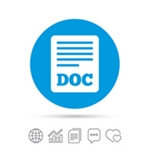COVID-19 DAN KEBEBASAN BEREKSPRESI DI INTERNET: MELIHAT REPRESI DIGITAL DALAM PEMBERITAAN TEMPO.CO
Abstract
The presence of the Covid-19 pandemic and high internet penetration in Indonesia have also encouraged community activities, one of which is digital activism. The purpose of this article is to describe digital activism carried out in the midst of a pandemic that has received a lot of repressive measures in cyberspace. The approach used is media cloud content analysis of Tempo.co news related to digital repression in Indonesia from March to December 2020. Researchers processed data using Nvivo 12 Plus software, the data generated included crosstab and wordcloud analysis. The results showed that hacking and doxing attacks were the most discussed cases of digital repression on Tempo.co. In addition, law enforcement and law enforcement against democracy in danger are indicators of the highest issue in Tempo.co's reporting. While the wordcloud analysis shows quotes from the police and government, many words imply some form of performance from the Police and Government.
Keywords
Full Text:
PDFReferences
Abdul Fatah. (2019). Hukum Pers Indonesia. Malang: Setara Pers.
Adhani, L. K., Dharmastiti, R., & Trapsilawati, F. (2020). Pengaruh Waktu Sebelum Dan Selama Pandemi Covid-19 Terhadap Perilaku Konsumen Belanja Online. Perspektif Keilmuan Teknik Industri Pada Era New Normal, 50–55.
Bleyer-Simon, K. (2021). Government repression disguised as anti-disinformation action: Digital journalists’ perception of covid-19 policies in hungary. Journal of Digital Media and Policy, 12(1), 159–176.
Briggs, A., & Burke, P. (2006). Sejarah Sosial Media. Jakarta: Yayasan Obor Indonesia.
Deibert, R. (2015). Authoritarianism Goes Global: Cyberspace Under Siege. Journal of Democracy, 26(3), 64–78. Retrieved from https://www.journalofdemocracy.org/articles/authoritarianism-goes-global-cyberspace-under-siege/
Dragu, T., & Lupu, Y. (2021). Digital Authoritarianism and the Future of Human Rights. International Organization, 75(4), 991–1017.
Effendy, F., Gaffar, V., Hurriyati, R., & Hendrayati, H. (2021). Analisis Bibliometrik Perkembangan Penelitian Penggunaan Pembayaran Seluler Dengan Vosviewer. Jurnal Interkom: Jurnal Publikasi Ilmiah Bidang Teknologi Informasi Dan Komunikasi, 16(1), 10–17. https://doi.org/10.35969/interkom.v16i1.92
Eriyanto. (2012). Analisis Framing Konstruksi, Ideologi, dan Politik Media. Yogyakarta: LKiS.
Frantz, E., & Kendall-taylor, A. (2020). Digital Repression in Autocracies. (March).
Freedom House. (2020). Freedom on the Net 2020. Retrieved April 8, 2022, from Freedom House website: https://freedomhouse.org/country/indonesia/freedom-net/2020
Hadi, Martanto Dwi Saksomo, Pujo Widodo, dan R. W. P. (2020). Analisis dampak pandemi Covid 19 di Indonesia ditinjau dari sudut pandang keamanan Siber. Jurnal Kebangsaan, 1(1), 1–9.
Jati, W. R. (2017). Cyberspace, Internet, Dan Ruang Publik Baru: Aktivisme Online Politik Kelas Menengah Indonesia. Jurnal Pemikiran Sosiologi, 3(1), 25. https://doi.org/10.22146/jps.v3i1.23524
Joyce, M. (2010). Digital activism decoded: the new mechanics of change. New York: International Debate Education Association.
Katadata. (2021). Penetrasi Internet Indonesia Meningkat saat Pandemi Covid-19. Retrieved December 2, 2021, from katadata.com website: https://databoks.katadata.co.id/datapublish/2021/10/06/penetrasi-internet-indonesia-meningkat-saat-pandemi-covid-19
Koran Tempo. (2020, October 31). Tahun Represi Digital. Koran Tempo. Retrieved from https://koran.tempo.co/read/cover-story/459058/tahun-represi-digital
Krippendorff, K. (2004). Content Analysis: An Introduction to Its Methodology (2nd ed.) Thousand Oaks. Sage Publications Ltd.
Mackinnon, D. P. (2012). Introduction to statistical mediation analysis. Introduction to Statistical Mediation Analysis, (January 2008), 1–477. https://doi.org/10.4324/9780203809556
Mill, J. S. (2005). On Liberty: Perihal Kebebasan. Jakarta: Yayasan Obor Indonesia.
Ndiaye, B. (2021). Social movements and the challenges of resource mobilization in the digital era: A case from francophone West Africa. Africa Today, 68(1), 49–71.
Nurlatifah, M. (2020). Persimpangan Kebebasan Berekspresi dan Tanggung Jawab Sosial pada Regulasi Jurnalisme Digital di Indonesia. Iptek-Kom, 22(1), 81–84.
Prianto, Y., Fuzain, N. A., & Farhan, A. (2021). Kendala Penegakan Hukum Terhadap Cyber Crime Pada Masa Pandemi Covid-19. Prosiding SENAPENMAS, (21), 1111. https://doi.org/10.24912/psenapenmas.v0i0.15146
Rahmat Kriyantono. (2009). Teknik Praktis Riset Komunikasi. Jakarta: Prenada Media Group.
Rulli Nasrullah. (2018). Riset Khalayak Digital: Perspektif Khalayak Media dan Realitas Virtual di Media Sosial. Jurnal Sosioteknologi, 17(2), 271.
Sanjaya, A. R., Banimal, A. hasan, Fundrika, B., Ningtyas, I., Saputri, N., Arum, N. S., … Sagena, U. (2021). Represi Digital di Tengah Pandemi. 1–64. Retrieved from https://id.safenet.or.id/2021/04/laporan-situasi-hak-hak-digital-indonesia-tahun-2020-represi-digital-di-tengah-pandemi/
Schuler, D., & Day, P. (2004). Shaping the Network Society: The New Role of Civic Society in Cyberspace. London: MIT Pres.
Sudiana, Y., & Muhazir, A. (2021). Makna Tahun Represi Digital Dalam Cover Koran Tempo Edisi 21 Oktober 2020. AGUNA: Jurnal …, 2(2), 63–74. Retrieved from https://ejournal.amikompurwokerto.ac.id/index.php/AGUNA/article/view/1336
Supraja, B., & Buana, S. (2021). Kekerasan terhadap pers melalui serangan siber: kasus pada media online tempo.co. 3(2).
Tempo, K. (2020). Penolak Omnibus Law jadi Korban Serangan Doxing. Retrieved from Koran Tempo website: https://koran.tempo.co/read/nasional/459216/aktivis-penolak-omnibus-law-jadi-korban-serangan-doxing?
Tri Suharman. (2020). Menjaga Pers di Era Doxing dan Vandalisme Digital. Retrieved December 10, 2021, from https://www.medcom.id/pilar/kolom/wkBYMrDb-menjaga-pers-di-era-doxing-dan-vandalisme-digital
DOI: https://doi.org/10.35308/source.v8i1.4592
Refbacks
- There are currently no refbacks.
SOURCE: Jurnal Ilmu Komunikasi indexed by:






Jurnal SOURCE is licensed under a Creative Commons Attribution-ShareAlike 4.0 International License.






